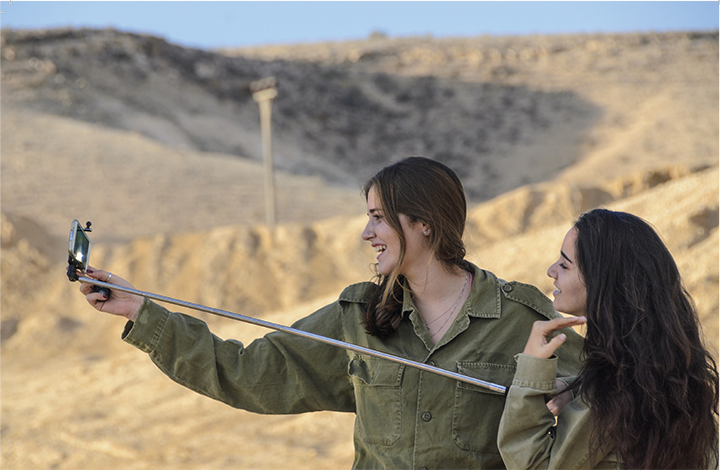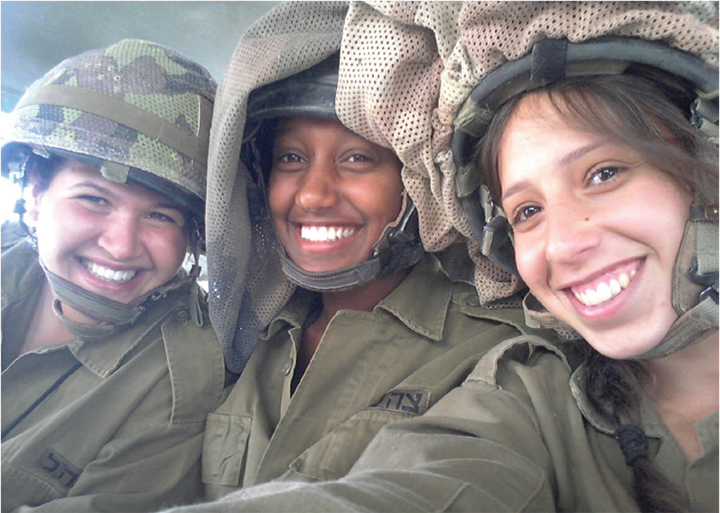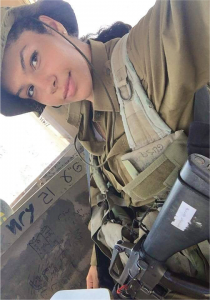

At work was an instance of what we have termed “selfie militarism.” In selfie militarism, violence often takes surprising forms, emerging in and through the banal and beautified terms of mobile self-portraiture. The militarized selfie is a hybrid genre that links commonplace selfie conventions with militarized political sensibilities. What results, we have argued, is the normalization of violent, racist, and/ or militant nationalist projects by means of very standard social media conventions.
Over the course of the last five years, we’ve watched the militarized selfie gradually grow and spread in Israel as a networked political form. Early instances of the phenomenon emerged in 2010, before the massive global proliferation of the selfie, and included Facebook photographs of soldiers posing in Palestinian homes during routine raids, or in front of blindfolded and cuffed detainees at checkpoints. In these early years, such viral images were framed in Israeli popular discourse as social aberrations, exceptions to Israel’s “moral army” and the national ethos of “purity of arms.” The phenomena would grow and spread in subsequent years, a measure of both the growing right-wing tendencies of the Israeli public and the increasing proliferation of mobile technologies and social media literacy in Israel. Today, selfie militarism no longer surprises Israeli publics. This coupling of militarism and the everyday tools of social media expression has become normalized.

When we began researching this book in 2009, “digital militarism” was in its infancy, in both Israeli and broader global contexts. But over the course of our research, we watched it grow and spread. Today, it need hardly be remarked, the phenomenon is no less than commonplace in political theaters across the globe. We are no longer surprised to learn about the integration of social networking into military arsenals; about the presence of smartphones on battlefields; about social networking from scenes of atrocity, by both victims and perpetrators; or the ways that popular platforms such as Twitter, Instagram, and YouTube both function as wartime archives and constitute critical tools for human rights and activist documentation projects—even as they might, many hope, eventually aid in bringing perpetrators to justice. The reach of contemporary warfare and armed conflicts into digital arenas has both enlarged theatres of military operation and changed our understanding of the political function and ends of digital technologies.
What does this mean for the Israeli case? Return, again, to selfie militarism. Our focus on this hybrid form—which couples the conventional genres and norms governing mobile self-portraiture with military contexts and sensibilities— is an attempt to study the ways that Israelis are living intimately with their military occupation in the course of their everyday digital lives. Selfie militarism is one way to highlight the very mundane and banal ways in which Israelis live with, and perpetuate, the occupation through standard networking practices. Today, we argue, social media functions as a crucial domain of everyday complicity with military rule—complicity evident not only in the actions of the Israeli soldier deployed in the West Bank, armed with both weapon and networked smartphone, but also in the networking practices of the Israeli resident of cosmopolitan Tel Aviv, for whom the occupation might seem to exist at something of a distance from her comfortable life. Liking and sharing from the relative comfort of Tel Aviv can also, we propose, constitute a form of digital complicity.
This text is adapted from the introduction to Digital Militarism: Israel’s Occupation in the Social Media Age (Stanford University Press, 2015).

